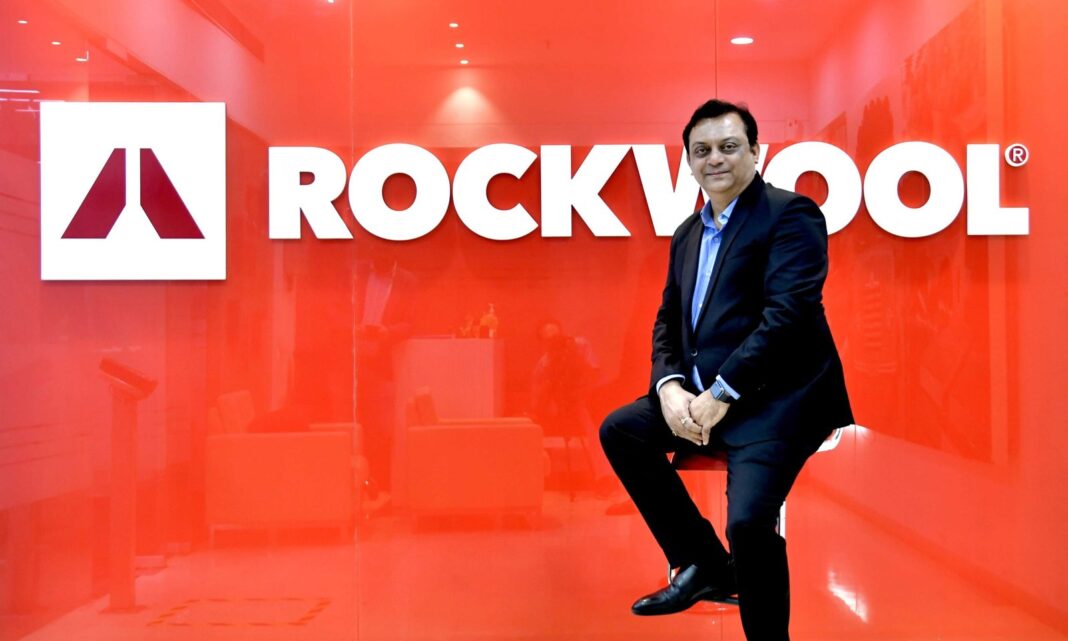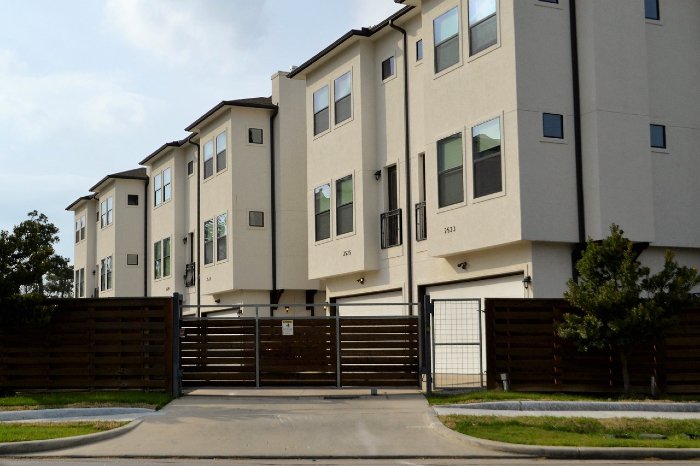His wealth of knowledge makes him the ideal leader… His deep understanding of fire protection & energy conservation solutions… His visionary approach and dedication to safety and sustainability continue to propel ROXUL ROCKWOOL Technical Insulation India Pvt. Ltd. to new heights in the industry… Here’s Mr. Vinay Pratap Singh, Business Unit Director for India & SAARC of ROXUL ROCKWOOL Technical Insulation India Pvt. Ltd. delving in deep into fire protection…


I have witnessed a notable transformation in the steel construction industry over the past five years. Steel has become an integral part of major infrastructure projects undertaken by prominent organizations. For example, one of the reputed banks recently constructed an 18-floor building in Hyderabad entirely out of steel, showcasing the growing trend toward steel-based structures. Similarly, most of the convention centers also extensively utilize steel in their construction.
Fire protection is an essential process of construction, yet, it is not common knowledge, especially for steel construction. Can you elaborate keeping in mind the Indian construction Industry?
Within the National Building Code of India 2016, part four covers fire protection and includes all provisions related to passive fire protection. The moment you consider a steel building, fire protection becomes essential because, in case of a fire in a steel-based building, the steel loses its mechanical strength by 50 percent once the temperature goes beyond 550 degrees celsius based on independent studies conducted worldwide. Awareness has gone up in this aspect in India in the last decade when people have even started referring to British standards the very instance a steel-based structure rises above 15 meters; according to the National Building Code of India, High rise building (15m and above) shall receive special attention with respect to fire and life safety. Although at a slow pace, India is headed in the right direction when it comes to the fire protection of steel buildings.
Are you happy with the existing codes and fire protection policies in India?
Yes, I would say we are connected with the current codes and policies. Our company has representation in the IS code committee and we have recommended a lot of changes that align with the international bylaws. The Government of India is taking hands-on actions and the Indian Standard Committee is also proactively involving the different stakeholders and taking in their suggestions and opinions. There is still a long way to go but the process has begun and continues.
The government is now taking proactive actions to address these issues and the fire department is becoming stricter in granting No Object Certification. Currently, there is a lack of adherence to the National Building Code and the full potential of fire protection products, like ours, is not being realized. By following the code and utilizing our products for fire and smoke barriers, high-rise buildings can achieve energy conservation and effective fire protection. We are actively engaging with customers, architects, and contractors to promote awareness and encourage the use of our product. Collaboration between the government, customers, and manufacturers is vital to drive industry-wide change and education.
What role does ROXUL ROCKWOOL play in tall buildings?
As I have already mentioned, fire protection is pre-requisite for steel buildings especially when the height goes beyond 15 meters. Any solution for fire protection should be tested as a complete system as per international/national standards. For example, while making a fire door, one has to go through a proper construction process with fire testing and take a test report from an independent third-party laboratory. The product is usable if passed after testing for two hours. Similarly, in fire partitions, if two rooms are separated by a wall, it should be fire rated for 2 hours. Most of the five-star hotels, commercial setups like buildings or convention centers, etc., use a lot of our systems. In a multi-story building, like a vertical structure, fire ducts, electrical ducts, and shafts need to be sealed on each floor to prevent fire spread. This is particularly important in places like Mumbai, India, where we see lots of vertical structures.
What are the steps you are taking to educate the industry about fireproofing?
We educate people on the significance of using fire protection systems and energy conservation products, such as Stone Wool v/s other solutions. In all our stakeholder engagement forums, showing fire-related demos is a norm as part of our awareness program. Through seminars, meetings with architects, editorials in magazines, and various educational initiatives, we strive to ensure that people understand the importance of implementing proper fire protection systems. Our extensive portfolio covers various sectors, including building construction and the industrial sector.
You have an extensive portfolio spread across several sectors of the building, construction and industrial sector; based on your experience, what is the major shift you have witnessed in the steel construction industry in the last 5 years?
Based on my observations, I have witnessed a notable transformation in the steel construction industry over the past five years. Steel has become an integral part of major infrastructure projects undertaken by prominent organizations. For example, one of the reputed banks recently constructed an 18-floor building in Hyderabad entirely out of steel, showcasing the growing trend toward steel-based structures. Similarly, most of the convention centers also extensively utilize steel in their construction.
The popularity of steel in infrastructure projects can be attributed to several factors. Firstly, steel construction offers rapid construction timelines, allowing for efficient project completion. Additionally, the versatility of steel allows architects and designers to explore unique and innovative structural designs, that align with their vision and requirements. This flexibility in design enables the delivery of diverse construction styles. Moreover, the prevalence of pre-engineered buildings is on the rise, with steel serving as the primary material in this segment.
What is the difference between fire protection building codes in India and other countries?
The difference between fire protection building codes in India and other countries is notable. Based on our experience, while India followed the British Standard BS476 for fire protection around 15 to 20 years ago, the implementation of these codes has been relatively weak in India. The codes and standards in India are often as stringent as other developed nations, but the execution and adherence to these codes have not been consistently robust. However, there is now an evident shift in India towards stricter implementation, particularly in large infrastructure projects such as airports. The government mandates the use of fire protection measures without any exceptions. Similarly, convention centers and five-star hotels in India are increasingly adopting comprehensive fire protection systems.
On the other hand, in regular buildings like hotels or smaller establishments, the implementation of fire bylaws is not always as stringent. While there is pressure on builders, infrastructure developers, and real estate entities to comply with fire bylaws, the level of implementation varies. Some progress has been made, such as the installation of fire doors and fire stops or addressing duct closures, but it is not yet fully comprehensive. In comparison, European and US countries consistently and thoroughly adheres to fire protection regulations. Therefore, there exists a difference in the level of commitment and adherence to fire protection building codes between India and other countries, with India gradually improving but still not reaching the same level of compliance seen in Europe and the US.
What is the general notion of the developers in India as far as fire protection is concerned?
The general notion among developers in India regarding fire protection varies based on the
category of builders and the city tiers. In type A cities like Mumbai and Delhi, developers have a better understanding of fire protection bylaws and are more aware of the importance of compliance. They have started adopting fire protection solutions such as fire doors, fire stops and other measures in their large multi-story buildings. However, in tier two and tier three cities, the awareness and understanding of fire protection bylaws are comparatively lower. Developers in these cities often ignore the importance of fire protection measures and may not fully comply with the regulations. This lack of awareness poses a challenge in ensuring proper fire safety measures in buildings. To address this issue, it is crucial to educate and create awareness among developers in tier two and tier three cities. Initiatives such as joint workshops and collaborations with fire chiefs are necessary to disseminate knowledge and emphasize the significance of fire protection. By extending support and offering assistance in conducting workshops, the aim is to promote awareness and encourage developers to prioritize fire safety measures in their projects.
If we can change one thing in our construction practices in India, what would that change be?
If there is one thing we could change in our construction practices in India, it would be to shift the focus from short-term cost savings to a long-term perspective that includes both CAPEX and OPEX. Currently, many builders and construction professionals prioritize reducing capex without considering the long-term implications. To bring about this change, it is important to emphasize the value of investing in quality products and environmentally friendly practices. For instance, incorporating water treatment plants in townships can contribute to environmental conservation by reusing water for purposes like flushing, thereby saving water resources. Each individual involved in the construction industry should consider the direction towards sustainability and environmental responsibility.
As a brand, ROCKWOOL plays its part in helping the environment. For every ton of ROCKWOOL product produced, the energy consumed and carbon emitted during its manufacturing is significantly offset by the energy savings achieved throughout its lifetime when used as a product. By using ROCKWOOL products, customers are not only saving energy but also contributing to the overall energy conservation efforts and reducing the stress on the nation’s power plants. By shifting our construction practices to prioritize long-term sustainability, environmental consciousness, and the holistic cost-effectiveness of projects, we can positively impact the environment and contribute to a more sustainable future.
What message do you have to give to the construction industry?
I really wanted to quote our CEO here, “If you are thinking that doing something is not worthwhile, or, is not safe, don’t do that.” Even I believe that if you think doing something is worthwhile and you can get the desired result, do it, but safety always comes first; if it is not safe don’t do it.







